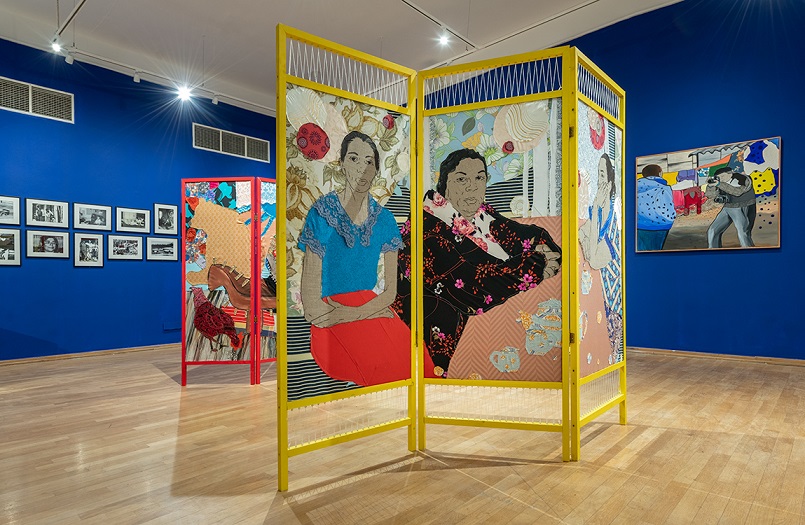The exhibition ‘Traveling Images’ is on display at the International Cultural Centre in Krakow. It features the works of Małgorzata Mirga-Tas – currently the most important representative of Romani contemporary art. This is the first presentation of the artist’s works following her great success at last year’s Venice Art Biennale.
The first part of the exhibition, titled ‘Atlas’, features works by various, less and more well-known authors from different collections, made in a variety of techniques, which illustrate the stereotypical perception of the Roma.
In the following rooms, visitors can see works by Małgorzata Mirga-Tas, attempting to disenchant imposed images, as well as a form of personal and collective self-presentation. The artist tackles the complex Roma and Polish identity, the decolonisation of Roma material cultural heritage and the Holocaust of the Roma and Sinti.
The ICC Gallery presents a wide selection of the artist’s works from 2017-2022, including the internationally acclaimed series ‘Exit from Egypt’ and a series of large-format textiles titled ‘Herstorie’. Also new works are on display, which focus on the history of Nowa Huta’s Roma and Roma memory.
Małgorzata Mirga-Tas is inspired by early art, especially Renaissance painting, but also by everyday life. In one way, she transforms the most significant motifs of European heritage and modern art for her own use. In the other, she researches and uses photographs from family archives.
An important source of inspiration for Małgorzata Mirga-Tas are the Roma women, whom she very often makes the protagonists of her works. They are family members, her closest associates, friendly artists and activists – prominent personalities in the Roma community. This peculiar minority feminism aims to deconstruct the stereotypical image of Roma women, perpetuated for centuries in visual culture.
Arkadiusz Słomczyński





